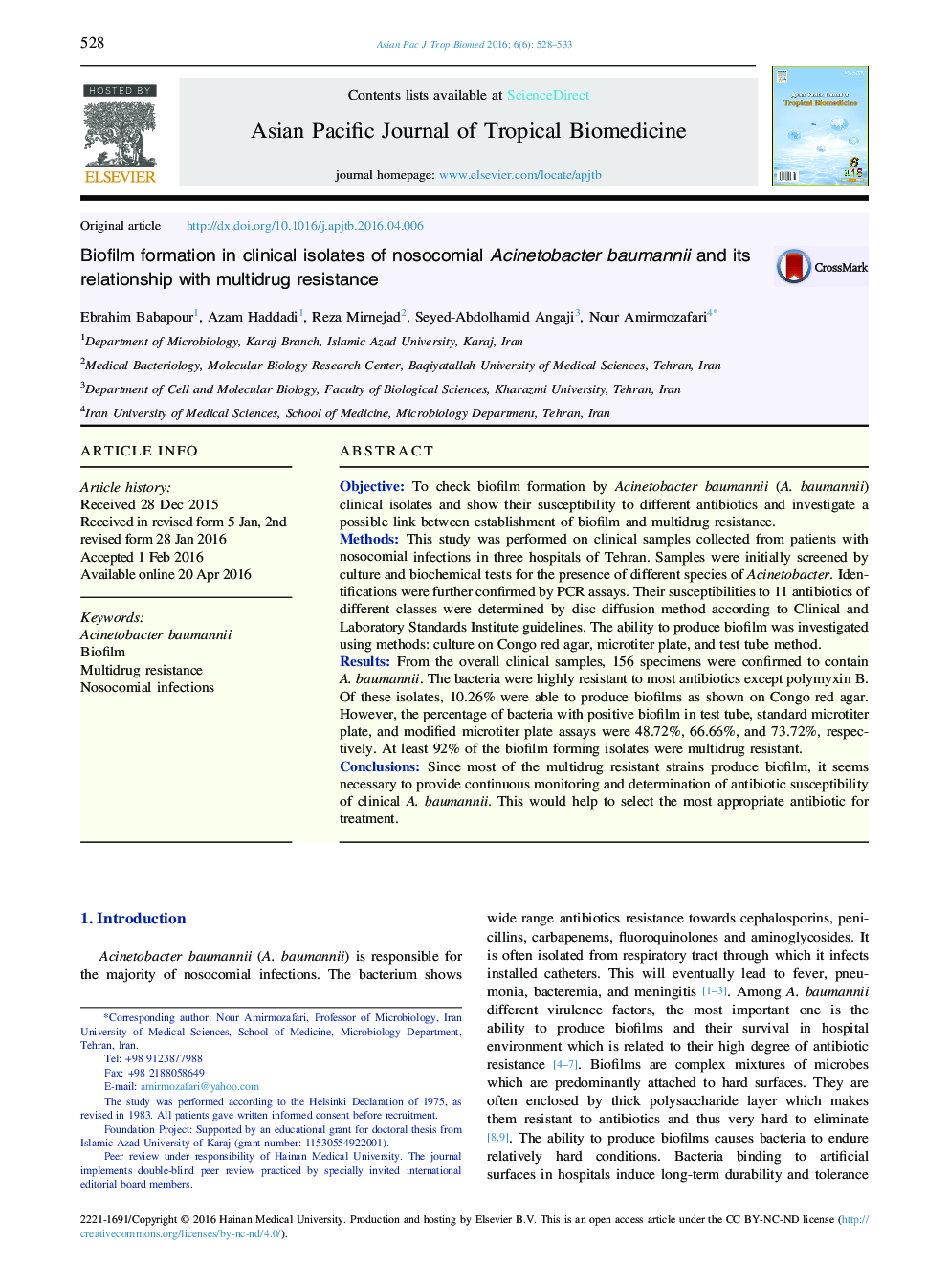| Article ID | Journal | Published Year | Pages | File Type |
|---|---|---|---|---|
| 2032469 | Asian Pacific Journal of Tropical Biomedicine | 2016 | 6 Pages |
ObjectiveTo check biofilm formation by Acinetobacter baumannii (A. baumannii) clinical isolates and show their susceptibility to different antibiotics and investigate a possible link between establishment of biofilm and multidrug resistance.MethodsThis study was performed on clinical samples collected from patients with nosocomial infections in three hospitals of Tehran. Samples were initially screened by culture and biochemical tests for the presence of different species of Acinetobacter. Identifications were further confirmed by PCR assays. Their susceptibilities to 11 antibiotics of different classes were determined by disc diffusion method according to Clinical and Laboratory Standards Institute guidelines. The ability to produce biofilm was investigated using methods: culture on Congo red agar, microtiter plate, and test tube method.ResultsFrom the overall clinical samples, 156 specimens were confirmed to contain A. baumannii. The bacteria were highly resistant to most antibiotics except polymyxin B. Of these isolates, 10.26% were able to produce biofilms as shown on Congo red agar. However, the percentage of bacteria with positive biofilm in test tube, standard microtiter plate, and modified microtiter plate assays were 48.72%, 66.66%, and 73.72%, respectively. At least 92% of the biofilm forming isolates were multidrug resistant.ConclusionsSince most of the multidrug resistant strains produce biofilm, it seems necessary to provide continuous monitoring and determination of antibiotic susceptibility of clinical A. baumannii. This would help to select the most appropriate antibiotic for treatment.
